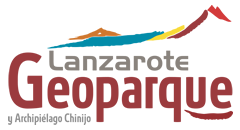Project Description
It formed after the eruption of Volcán de La Corona around 25 ka BP. It is more than 7.6 km long. It consists of a complex of halls and galleries superimposed with domes of up to 20×20 m and small interior lagoons. On the surface, the tube stands out because of a linked succession of jameos (collapses of the dome of the volcanic tube that make natural access to the inside easier). The three most valuable geological elements of the tube and that are the most highly represented within the complex, are: Cueva de Los Verdes, with morphological structures that can be seen on the inside of the tube, and mineralisations; Jameos del Agua, which holds the geological museum “Casa de los volcanes” […]; and Tubo de La Atlántida, that includes the last 1.6 km […], which is nowadays below sea level and is the most direct evidence of the global change of the sea level during the last glaciation (between 23 to 19 ka BP). There is an international research lab with teams throughout the tube.
Its main interest is volcanological, and the secondary one is geomorphological and petrological. This is one of the most spectacular ones in Lanzarote and the Chinijo Islands due to its geological significance as well as the unique biodiversity that lives within the volcanic tube. Another peculiarity is the tourist infrastructures in Jameos del Agua and Cueva de los Verdes, designed by César Manrique and Jesús Soto, which make them unique worldwide.

